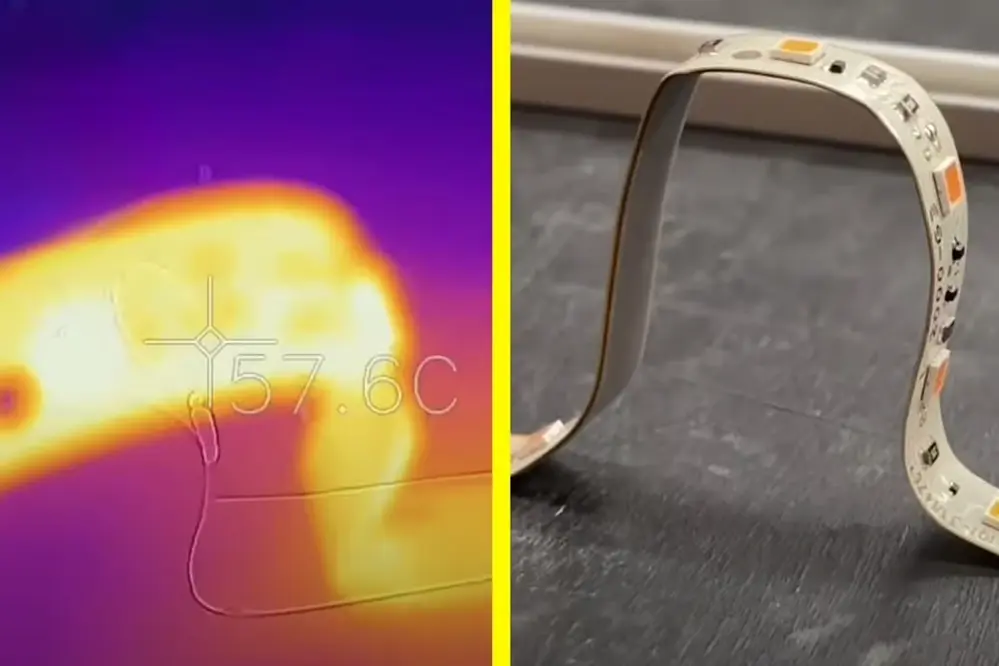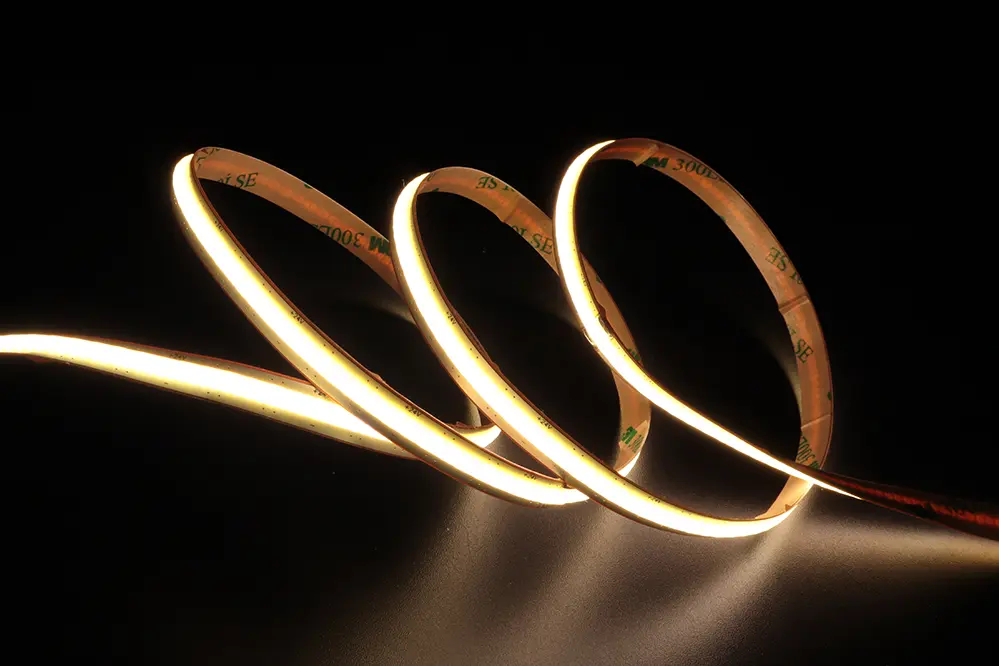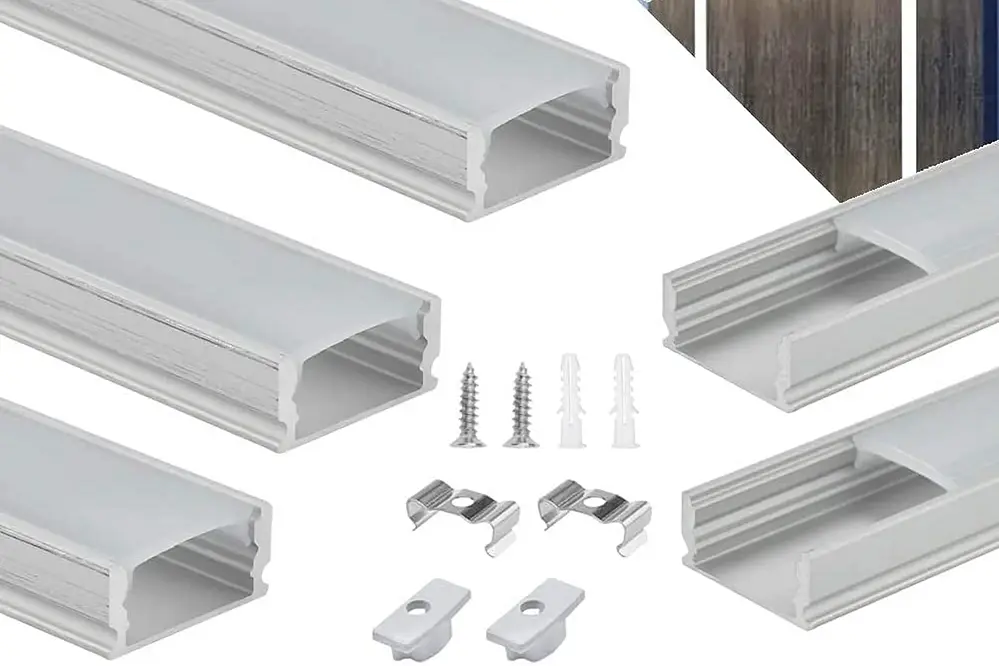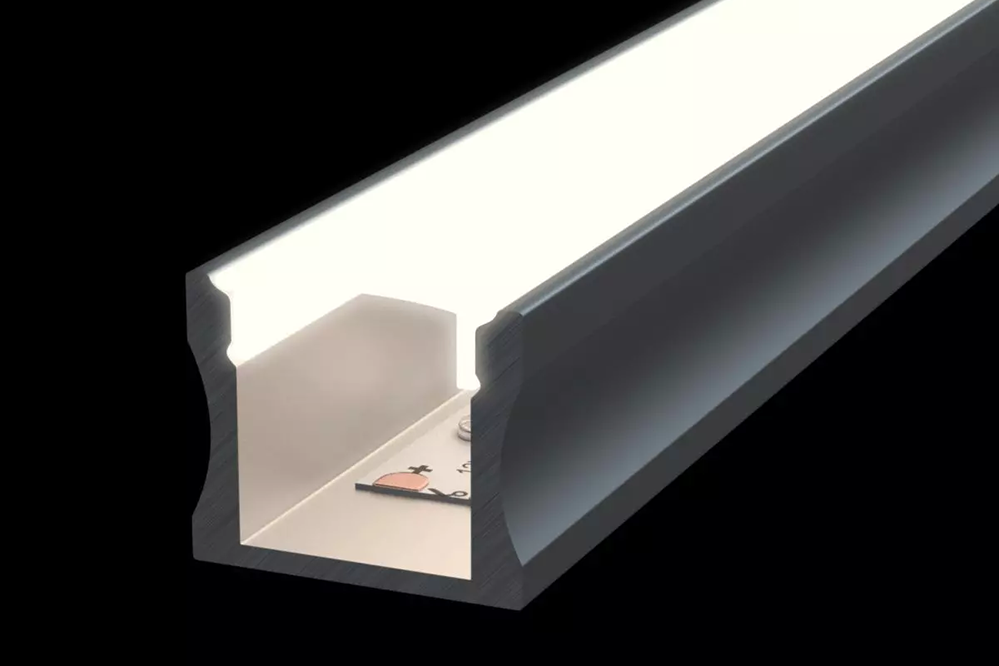Are you aware that LED strip light heat control can make or break the performance of your lighting setup? Many people underestimate the importance of managing heat, leading to premature failure and inefficiency. This article aims to shed light on the critical aspects of heat control for LED strip lights, ensuring you get the most out of your investment.
One common misconception is that LED lights don’t generate heat. While they are more efficient than traditional bulbs, LEDs do produce heat that needs to be managed effectively. Without proper heat control, you risk reducing the lifespan of your LED strips and compromising their performance. This is a challenge many face, often without realizing the root cause of their lighting issues.
The benefits of effective LED strip light heat control are manifold. Not only does it extend the lifespan of your lights, but it also enhances their performance and energy efficiency. Proper heat management can lead to significant cost savings and a more reliable lighting solution, making it a crucial aspect of any LED setup.
In this article, we will cover key points such as ventilation techniques, the importance of suitable adhesives, and efficient power supply strategies. These insights will equip you with the knowledge to prevent overheating and ensure your LED strips function optimally.
So, are you ready to master the art of LED strip light heat control? Join us as we delve into these essential tips and best practices, paving the way for a brighter, more efficient lighting experience.
Understanding LED Strip Light Heat Generation

At first glance, one might overlook the heat production of LED strip lights. However, an in-depth understanding reveals that just like any other light source, LEDs generate heat despite their high efficiency.
Heat production in LEDs primarily arises from the electrical resistance within the semiconductor materials. When electric current flows through these materials, some energy is inevitably converted into heat. This phenomenon, although less pronounced than in traditional lighting solutions, still necessitates careful consideration in the context of managing LED lifespan and performance.
Consequently, the design of LED strip lights incorporates specific materials and structures to dissipate this heat efficiently. By minimizing the thermal resistance and incorporating elements like heat sinks, manufacturers ensure that LEDs operate at optimal temperatures, thereby prolonging their functionality.
In summary, comprehending the nuances of heat generation in LED strip lights is pivotal. Knowledge empowers users to implement effective heat management strategies, ensuring that these modern lighting solutions not only shine brightly but also endure the test of time. Engaging with this informed perspective can foster innovative applications and inspire confidence in the reliability of LED technology.
Why Heat Control Is Important
Heat control in LED strip lights is crucial for maintaining brightness, longevity, and overall performance. Efficient heat management directly impacts the durability and reliability of LED lighting systems.
Without adequate heat regulation, LEDs are prone to overheating. Overheating can cause immediate and long-term damage, compromising the light quality.
Moreover, excessive heat can result in color shift and reduced lumen output. These issues diminish the overall aesthetic and functional quality of the lighting system.
Heat not only affects the LED chips but also the surrounding components. Prolonged exposure to high temperatures can degrade materials and electronic parts.
Proper heat control ensures these elements remain intact and functional. Maintaining optimal operating temperatures fosters sustained performance and mitigates early failure risks.
In essence, effective heat management is a cornerstone for ensuring the longevity, efficiency, and reliability of LED strip lights. When heat is appropriately managed, users experience consistent, high-quality illumination.
Choosing the Right LED Strip Lights

Selecting the best LED strip lights is paramount to optimizing LED strip light heat control and overall performance.
It begins with understanding your specific lighting needs.
Consider the type of LEDs, their power consumption, and the installation environment. High-quality LEDs with effective heat dissipation capabilities are essential.
Matching the strip light’s application with its power requirements ensures you avoid overheating issues. Whether for ambient lighting or detailed task illumination, invest in energy-efficient, high-CRI LEDs to achieve your desired lighting outcome without compromising heat management.
Heat-Resistant Materials for LED Strips
When selecting LED strips, integrating heat-resistant materials is crucial to ensure their performance and reliability stand the test of time.
Material choices, such as aluminum, silicone, and advanced thermoplastics, serve a pivotal role in safeguarding LEDs from overheating. Aluminum, in particular, offers excellent heat dissipation properties, significantly reducing the likelihood of thermal damage. Silicone and certain high-grade thermoplastics provide additional resilience, protecting against both heat and external elements.
Furthermore, heat-resistant adhesives play a vital role in maintaining system integrity. By choosing adhesives designed to withstand higher temperatures, you reinforce the connection points and circuitry that keep the system intact. These advanced adhesives prevent the separation and degradation often caused by extreme heat.
Ultimately, incorporating superior heat-resistant materials not only enhances the lifespan of LED strips but also boosts overall energy efficiency. This conscious selection ensures that your lighting solutions remain robust and effective, dramatically reducing maintenance needs and fostering sustainable, high-quality illumination experiences.
Proper Installation Techniques
Ensuring proper installation techniques is critical, improving longevity, and optimizing the performance of your LED strip lights. Effective installation serves as the foundation for superior functionality.
Precise measuring is the beginning of an excellent setup. Always measure the installation area meticulously.
Next, prepare the surface where the LED strip lights will be mounted, ensuring it is clean and dry. This step is pivotal in securing a strong adhesive connection.
Planning the layout beforehand is crucial. Visualize the final setup for efficient placement and even light distribution.
Use the correct power supply by considering voltage and current requirements to avoid overheating issues, which significantly enhances system reliability and safety.
Lastly, avoid overbending or excessively twisting the strips. Proper handling prevents damage to the internal circuitry, ensuring consistency in light quality and heat management.
Effective Cooling Methods

Implementing efficient heat dissipation strategies, a pinnacle of technological ingenuity, begins with adequate ventilation. Placing LED strips in areas with sufficient airflow averts overheating, ensuring the luminaries perform at their zenith. Furthermore, incorporating aluminum channels with diffusers is a brilliant technique; the aluminum acts as a heat sink, dispersing warmth evenly, while the diffuser augments both thermal performance and aesthetic appeal. Lastly, utilizing a reliable thermal adhesive ensures a secure bond between the LED strip and the ambient elements, fortifying the system’s overall heat control and performance.
Passive Cooling Options
Passive cooling options stand as silent guardians, a beacon of technological advancement, ensuring LED strips perform immaculately. Effective heat management should not be underestimated.
By integrating aluminum profiles, also known as “LED channels,” passive heat dissipation is enhanced significantly, mitigating overheating. This method ensures the longevity and efficiency of LED strip lights.
Aluminum profiles can lower LED operating temperatures by 10-15°F, extending lifespan.
Additional tactics include strategic placement, spacing LEDs apart to allow natural convection, and using materials with high thermal conductivity, such as copper. An intelligent layout enables maximal cooling efficacy, imparting unsurpassed durability and brilliance.
Active Cooling Solutions
For enhanced LED strip light heat control, active cooling solutions provide dynamic and powerful methods.
- Cooling Fans: Effectively dissipates heat through forced convection.
- Heat Sinks with Fans: Improves heat removal by combining passive heat exchange and active airflow.
- Liquid Cooling: Routes coolant to absorb and transfer heat away from LEDs.
- Thermoelectric Coolers (TECs): Uses electric currents to move heat away from LED strips.
- Blower Systems: Directs high-velocity air across LED strips to reduce temperatures.
Cooling fans are a prevalent choice, delivering reliable and versatile performance.
Implementing liquid cooling adds a sophisticated edge, ensuring precise temperature control.
Don’t underestimate the power of thermoelectric coolers, offering cutting-edge efficiency in critical thermal management scenarios.
Using Heat Sinks for LED Strips
When it comes to LED strip light heat control, utilizing heat sinks is paramount. Heat sinks are engineered to effectively dissipate thermal energy.
They excel in passive cooling by spreading heat over a larger surface area. This reduces the temperature of the LEDs, enhancing longevity and consistent performance.
Installing heat sinks is a straightforward process that can have a significant impact. They work by creating a path for heat to travel away from critical components, leveraging materials like aluminum that are excellent conductors.
Overall, heat sinks are an indispensable asset in the arsenal of LED strip light heat control strategies. They not only maintain optimal operating temperatures but also bolster energy efficiency and extend the lifespan of your LED strips. Incorporating heat sinks into your design is a testament to adopting robust, sustainable, and innovative thermal management practices.
Temperature Monitoring Tools
Accurate temperature monitoring tools are vital for comprehensive LED strip light heat control strategies. These tools provide invaluable data.
Thermocouples offer precise temperature readings. They consist of two dissimilar metals.
By measuring voltage changes, thermocouples accurately interpret temperature variations. This data is essential for proactive maintenance.
Thermistors present another effective option. These resistive devices alter resistance based on temperature changes, providing real-time monitoring.
Infrared thermometers, meanwhile, enable non-contact temperature assessments. They operate by detecting infrared radiation, ensuring safe and accurate measurements.
Collectively, these tools ensure that your LED light setups maintain optimal thermal conditions. This not only enhances performance but also significantly prolongs the lifespan of your LED strips.
Adjusting Power Supply Settings
Properly adjusting power supply settings is crucial for ensuring the optimal performance of your LED strip lights while effectively managing heat. By fine-tuning these settings, you can maintain a balance.
A regulated power supply keeps voltage within safe parameters. This minimizes overheating.
Moreover, constant current drivers offer another advantage. They ensure current consistency (irrespective of voltage changes) and prevent thermal runaways.
Under-driving LEDs can produce consistent brightness while reducing heat generation, ultimately extending the lifespan of the strips.
These adjustments also play a significant role in energy efficiency. Routing less power where needed helps in conserving energy while maintaining excellent light quality for any project and environment.
Overall, the key to long-term success lies in mastering these settings. Precise adjustments ensure your LED strips perform excellently without succumbing to heat-related issues.
Managing Ambient Temperature
Efficient LED strip light heat control begins with monitoring and adjusting the ambient temperature, ensuring a balanced environment for peak performance.
High ambient temperatures can escalate the heat emitted from LED strips.
Consider installing LED strips in cooler areas to mitigate heat accumulation (especially spaces with ample ventilation) and optimization.
Implement assistive cooling methods such as fans or active cooling systems, guaranteeing the ambient temperature remains low.
Utilizing these strategies can significantly diminish heat impact, curbing potential damage, thereby extending the lifespan and efficiency of your LED strips.
Ultimately, the goal is to create a conducive environment for your LEDs. Consistent ambient temperature management ensures your LED strips operate at their best, delivering sustained, high-quality illumination.
Importance of Ventilation
When considering LED strip light heat control, understanding the importance of ventilation can’t be overstated.
Since 2016, numerous innovations, including advanced airflow mechanisms, have demonstrated remarkable benefits in maintaining optimal performance levels while preventing overheating.
Indeed, it’s well-documented that LED strip lights’ efficiency is significantly enhanced by proper ventilation, ensuring both the longevity of the lights and the safety of the installation area.
Strategic placement of your lights, facilitated by spaces that allow for unobstructed airflow — such as near windows or ventilated panels — ensures minimal heat buildup and consistent performance.
By incorporating robust ventilation plans, you can achieve exceptional illumination while safeguarding your investment against unnecessary wear and tear.
Regular Maintenance Tips
Ensure longevity and performance.
Regular inspection of your LED strips is essential. This allows you to check for any signs indicative of potential failures or overheating, such as discoloration or physical deformation. Additionally, examining the power supply for any anomalies or voltage fluctuations can help prevent premature aging or damage.
Clean your LED strips often.
Keep dust and debris away by utilizing a soft cloth or air blower. Doing so improves the strips’ efficiency and prevents unnecessary heat accumulation.
Monitor the surrounding temperature.
Pay close attention to the ambient conditions – ensure that your LED strips are not exposed to excessive heat sources or direct sunlight – to maintain consistent and safe operating temperatures.
Implement these meticulous maintenance routines for unparalleled and consistent illumination, ensuring your lighting system excels, enriching your environment with brilliance.
Avoiding Common Heat Control Mistakes
Effective LED strip light heat control necessitates awareness of frequent errors that can hinder the performance and lifespan of your lighting system.
Firstly, one common mistake is inadequate ventilation. Many users install LED strips in enclosed spaces without considering the necessity for adequate airflow, leading to unnecessary heat buildup.
Secondly, another frequent error is the use of inappropriate adhesives or mounting surfaces. Utilizing non-thermally conductive materials can exacerbate heat retention, specifically when affixed to insulated surfaces.
Another aspect to consider is power supply management. Employing an underpowered or unstable power source can result in overheating and fluctuations, thus reducing LED efficiency and longevity.
Proactively avoiding these pitfalls will bolster your LED system’s efficacy, ensuring consistent, vibrant illumination and extending the life of your investment.
Conclusion
Effective LED strip light heat control is paramount for ensuring optimal performance and extending the lifespan of your lighting solutions. By meticulously implementing proper ventilation, selecting suitable adhesives, and employing efficient power supply strategies, you can significantly mitigate potential overheating issues. This proactive approach not only guarantees the functionality and longevity of your LED strip lights but also enhances the overall lighting experience, making it more reliable and enjoyable.
Continuous improvement and adaptation to the latest advancements in LED technology are crucial for refining your heat control methods. Staying abreast of new developments ensures that your lighting solutions remain both effective and sustainable. Your dedication to mastering LED heat control is not only commendable but also instrumental in setting new standards for excellence in lighting technology. Embrace these best practices to elevate your expertise and contribute to the advancement of the industry.





